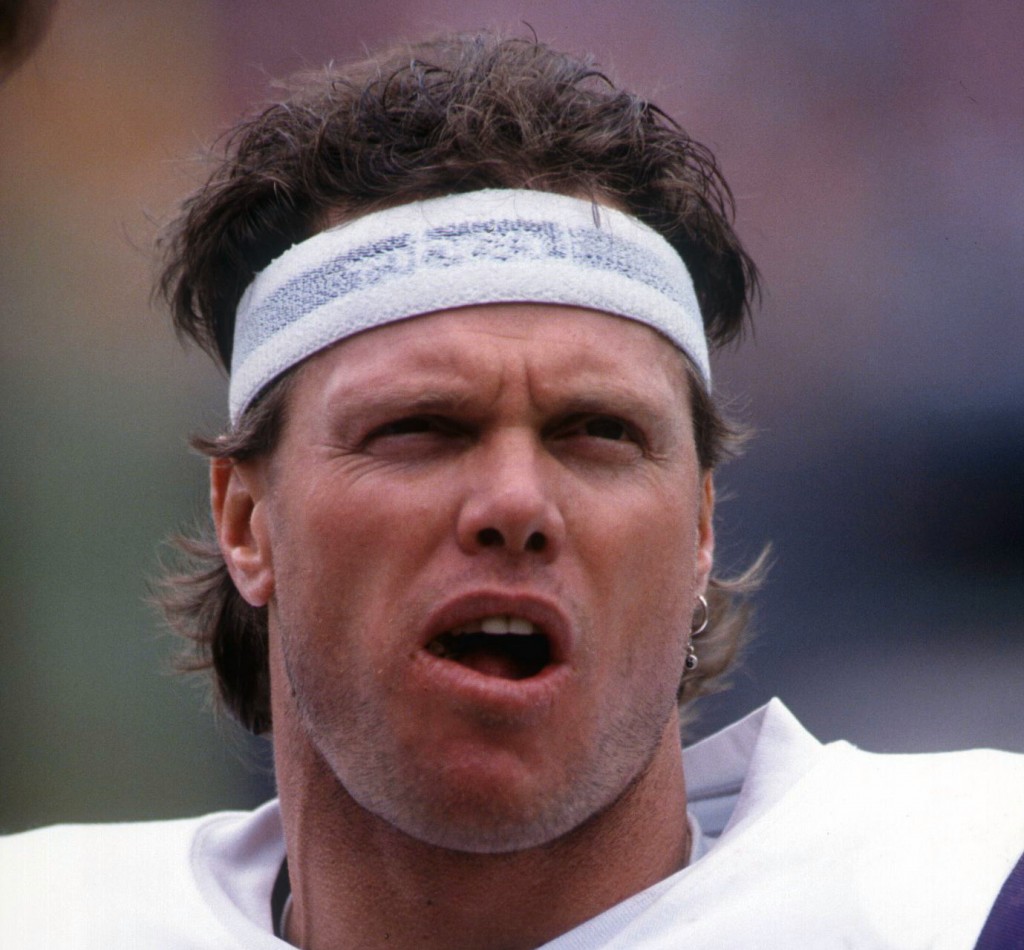A group of former National Football League (NFL) players made headlines in April 2011, when they filed a federal lawsuit against the league alleging that the league’s negligence contributed to their suffering repeated concussions over the course of their careers. Since then, over 4,800 former players have joined the suit, including former stars such as Jim McMahon and Bruce Smith.

DECADE. HE SAW REGULAR SEASON P LAY FOR SIX
PROFESSIONA L TEAMS. NOW, A FTER STRUGGLING WITH
MENTAL ILLNESS, HE IS ONE OF THOUSANDS OF
PLAINTIFFS IN A LAWSUIT AGAINST THE LEAGUE.
The players’ Complaint alleges that the NFL “was aware of the evidence and the risks associated with repetitive traumatic brain injuries virtually at the inception, but deliberately ignored and actively concealed the information from the Plaintiffs and all others who participated in organized football at all levels.” The NFL made an attempt to settle the suit in August of 2013, reaching a $765 million settlement, only to have the settlement rejected by U.S. District Judge Anita Brody as insufficient to satisfy the claims of all potentially qualifying plaintiffs. The NFL will thus likely end up paying a larger settlement at some point in the future, although when is uncertain. There is an obvious incentive for the NFL to allow litigation to drag on in an effort to force the hand of the plaintiffs’ lawyers, who are working on a contingency fee.
When the NFL’s concussion lawsuit was filed, many hockey fans knew it was only a matter of time before retired NHLers would follow suit (pun intended). Sure enough, in November 2013, a group of 10 former NHL players filed a lawsuit with U.S. District Court for the District of Columbia making similar claims to those contained in the NFL lawsuit Complaint. Specifically, the NHL players’ Complaint states that the league knew, or should have known, about the dangers posed by concussions and failed to do enough to reduce the risk of head injuries and educate players about the issue. This assertion is largely based on the league’s failure to take remedial action in light of mounting evidence of the long-term dangers of head injuries. However, the Complaint also alleges that the league’s negligent conduct persists by, “refusing to ban fighting, refusing permanently to ban players who, after investigation and a fair hearing, have been shown to have intentionally hit another player in the head, and by continuing to permit teams to employ hockey players whose main role is to fight or violently hit players on the other team (“Enforcers”).” The parallels between the NHL and NFL suits goes beyond their timing and content, as the plaintiff’s attorney in the NHL suit, Mel Owens, is a former NFL linebacker.
While the $765 million settlement was considered a drop in the bucket for the behemoth profit-machine that is the NFL, such a sum would be much more difficult to stomach for the NHL, which is a fraction of the size. While the NHL suit features fewer plaintiffs (and is actively seeking more to register), the NFL settlement sets an obvious precedent given the similarities between the claims. While reaching a similar settlement may be wholly unpalatable, it could pale in comparison to possible damages that might be awarded at trial. As the NHL grows in popularity throughout the United States, and its annual revenues creep over $3 billion annually, this lawsuit has the potential to completely derail the league’s finances.
These lawsuits have been a long-time coming in light of the growing evidence of the devastating long-term effects of repeated head injuries. Perhaps in anticipation of, or in response to, these lawsuits, the NFL and the NHL have both placed a renewed emphasis on player safety over the past 5 years, implementing numerous rule changes in order to reduce head injuries and ensure the proper treatment of head injuries that occur. Both leagues have struggled at times to reconcile these rule changes with perceptions, perhaps outdated in light of modern scientific evidence, of how these games should be played. Interestingly, it is almost always the players who offer the most significant resistance to changes that are designed to ensure their safety. Regardless, these actions may be too little too late, as most of the plaintiffs had retired long before they were implemented.
While the negligence alleged of the leagues has yet to be proven in court, and the onus on the players to do so will be steep, the lawsuits certainly raise some interesting legal questions about the sports. While recent efforts to improve player safety are a positive step, both sports are inherently violent and not all risk can be removed. It is certainly easy to empathize with the players, especially those who played before salaries began to skyrocket in the 1980s and 1990s. If the leagues were indeed aware of the mounting evidence of the long-term effects of repeated head trauma, was it their responsibility to shield the players from these risks, or to make them aware of them? Would it not be fair that those who profited from the players’ participation in the sport and their resulting injuries be made to compensate them?
On the flip side, one can easily see an argument that such players voluntarily assumed such risks or even contributed to them by refusing to wear a helmet or a visor, once such technology was made available. A true cynic may even view the lawsuits as mere opportunism on the part of the players, seeking to supplement their retirement income at the expense of the highly successful leagues that once employed them.
Whatever view one takes of the lawsuits, one thing is certain. The years of providing entertaining and (sometimes) profitable “old-time hockey” and “smashmouth football” have caught up with two of the continent’s most prominent sports leagues. The NHL and NFL are about to have their bells rung.
